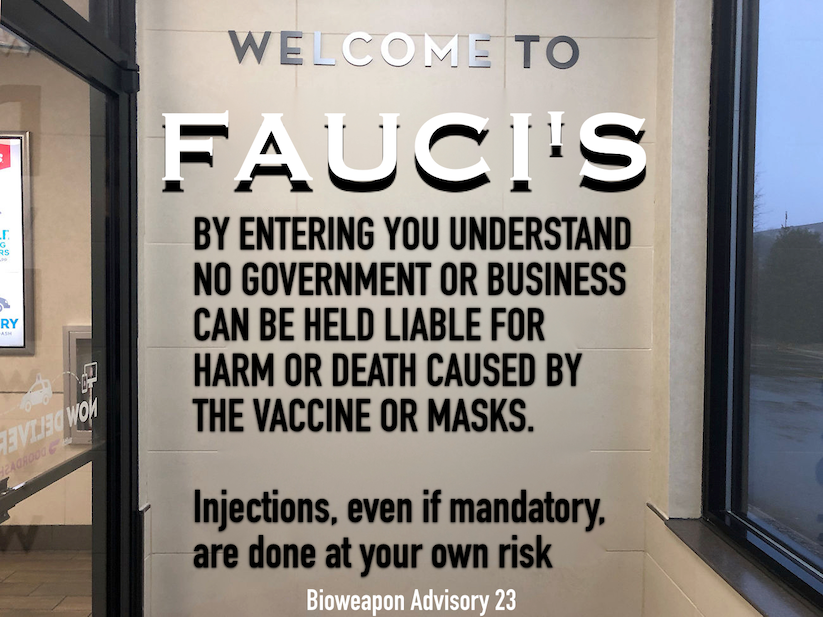Panic Hype-Man Fauci Acknowledges the PCR Test Cannot Reliably Detect Infection or Measure Contagiousness [fake test = fake false positive numbers = plandemic]
/MERCOLA STATES: SO What’s the Real Death Count? The CDC’s belated admission that the PCR test can’t identify active infection raises another question: What does this mean for those who died with a positive test? Did they actually have an active infection? If not, should they have been designated as COVID deaths?
The obvious answer to the last two questions is, of course, no. The vast majority were likely false positives, and the real death toll from COVID-19 considerably lower than we’re led to believe. The CDC undoubtedly knew this all along, seeing how they’ve been relentlessly criticized for their recommendation to run the PCR at a CT of 40. They’re trying to pretend that they just realized this, but that’s simply not believable.
STORY AT-A-GLANCE
Since the beginning of the pandemic, experts have warned that the PCR test is not as a valid diagnostic and produces far too many false positives, as it can pick up on “dead,” nonreplicating viral debris
The U.S. Centers for Disease Control and Prevention now admits the PCR test can remain positive for up to 12 weeks after infection. For this reason, they say most people don’t need to retest negative before ending their quarantine
The CDC also admits the PCR cannot identify active infection or measure contagiousness
People who are double-jabbed or unvaccinated and test positive for SARS-CoV-2, or have known exposure, but remain asymptomatic, now only need to isolate for five days rather than 10, but should wear a mask for another five days when at work or in public. People who are triple-jabbed do not need to isolate after exposure, but should wear a mask for 10 days
Health care workers who test positive for COVID but remain asymptomatic can return to work after seven days with a negative test, but isolation time can be cut to five days if there are staffing shortages
From [HERE] and [MERCOLA PDF] Since the beginning of the pandemic, experts have warned that the PCR test is not a valid diagnostic tool and produces far too many false positives, as it can pick up on “dead,” nonreplicating viral debris. The US Centers for Disease Control and Prevention (“CDC”) now admits the PCR test cannot identify active infection or measure contagiousness.
A PCR test cannot distinguish between “live” viruses and inactive, non-infectious, viral particles. This is why it cannot be used as a diagnostic tool. As explained by Dr. Lee Merritt in her August 2020 Doctors for Disaster Preparedness lecture, media and public health officials appear to have purposefully conflated “cases” or positive tests with the actual illness in order to create the appearance of a pandemic.
Furthermore, a PCR test cannot confirm that SARS-CoV-2 is the causative agent for clinical symptoms as the test cannot rule out diseases caused by other bacterial or viral pathogens. The inventor of the PCR test, Kary Mullis, who won a Nobel Prize for his work, explained this as shown in the video below.
Almost universally, health authorities have instructed labs to use excessively high cycle thresholds (“Ct”) — i.e., the number of amplification cycles used to detect RNA particles — thereby ensuring a maximum of false positives.
From the start, experts noted that a Ct over 35 is scientifically unjustifiable, yet the U.S. Food and Drug Administration (“FDA”) and the CDC recommended running PCR tests at a Ct of 40,5; the University of Queensland in Australia said that laboratory technicians were running PCR tests at 40 to 50 Ct; and the World Health Organization recommended a Ct of 45.
The pandemic of false positives was then used by world governments to implement pandemic countermeasures that have destroyed the global economy, ruined countless lives, decimated the education of an entire generation and stripped us of basic human rights and freedoms.
In a 30 December 2021 appearance on MSNBC, Dr. Anthony Fauci responded to questions about the updated CDC guidance. CDC director Rochelle Walensky also tried to make sense of the new guidance in a 29 December 2021 ABC News interview.
Fauci was asked about how one can measure contagiousness. If the PCR can register positive for 12 weeks after an infection, it can’t be a reliable indicator of infectiousness. This was precisely the point that Mullis attempted to make in the video above with respect to PCR and HIV.
So, how can we tell if we’re infectious or not? Fauci confirmed that the PCR can only tell you there’s a presence or absence of viral fragments, not whether it’s an active infection, or whether you’re actually infectious. He did not, however, provide an answer to the question as to how one can measure contagiousness.
How is it that the CDC, and health officials in all countries for that matter, didn’t realise that the PCR test was picking up dead viral debris for three months, or longer, after infection? The facts that the test, a) was far too sensitive, and b) couldn’t identify active infection, were criticisms from the start. What the CDC’s belated admission means is that, for the past two years, people have unnecessarily wasted time in self-isolation — perhaps weeks — waiting for a negative test.
Sources and resources:
Bombshell Admission — The COVID Tests Don’t Work, Dr. Joseph Mercola, 14 January 2022
Dr. Lee Merritt: SARS-CoV2 and the Rise of Medical Technocracy, Doctors for Disaster Preparedness (DDP) 38th Annual Meeting, held on August 16, 2020, in Las Vegas
Was the COVID-19 Test Meant to Detect a Virus? By Celia Farber, 7 April 2020
PCR Test Inventor Kary Mullis Tells the Truth About the Flawed COVID-19 Test
Inventor of PCR Test – “PCR is not a reliable test for viruses”






































































































































































































































































